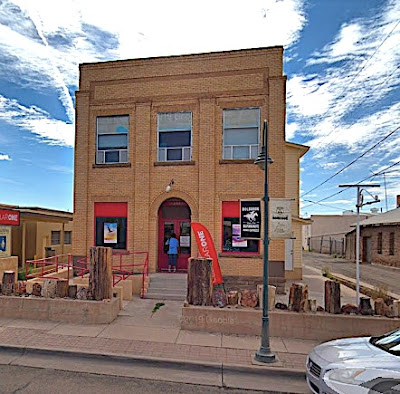Two high-profile, big money media projects of interest to Freemasons are inching closer to reality - and knowing Hollywood, they are spurring each other on in a race to see who gets in front of audience eyeballs first.
First up, NBC has now officially authorized and ordered a pilot film of Langdon, a new TV series initially based on Dan Brown's Masonic-themed 2009 mystery adventure novel The Lost Symbol. I reported this last June, but this announcement by NBC and Imagine Entertainment means this project is no longer just a rumor and is slated for the 2020 production season. So it's real as of now.
According to the Deadline website, the approved script for the proposed Langdon pilot has been written by The Crossing creators Dan Dworkin and Jay Beattie, and rumor has it that Dan Brown recommended them for the project. They've been named as the show's executive producers - they also co-created/executive produced Matador, and served as consulting producers on Star Trek: Discovery and American Horror Story.
(While you wait, I'd like to recommend my books Solomon's Builders and Deciphering The Lost Symbol so you can bone up on the REAL Masonic background and history of Washington D.C.)
Meanwhile, over at the House of Mouse more rumors keep being circulated about Disney developing National Treasure 3 as either a big-budget movie release, or as a streaming Disney+ offering. This was first being touted back in November, but now screenwriter Chris Bremmer, who wrote the script for the current Will Smith/Martin Lawrence picture Bad Boys For Life, has confirmed to the Hollywood Reporter that he's been tapped by producer Jerry Bruckheimer to pen a National Treasure 3 script. That's all anyone is saying publicly, and nobody knows if stars Nicolas Cage, Justin Bartha, Diane Kruger, Jon Voight, Harvey Keitel, and Helen Mirren will be back, or if this will center on a new set of characters. It's been a dozen years since the second very successful NT movie came out, and that cast isn't getting any younger (although with the creepy new de-aging SFX software, anything is now possible).
The original National Treasure with its Masonic Founding Fathers and buried Templar treasure was deviously designed in 2004 by Jerry Bruckheimer and Disney to capitalize on Dan Brown mania while the world awaited his promised sequel to The Da Vinci Code, which turned out to be The Lost Symbol. Bear in mind that Hollywood is a fickle place and, to quote Bart Simpson (or maybe George Burns), show business is a horrible bitch goddess. One or both of these projects could disappear or actually make it to the light of a flickering screen. I'm guessing some executive saw viewership figures on both Lodge 49 and the Sky TV five part series about the United Grand Lodge of England that Hulu aired last Fall and decided, "These Freemason guys are hot again. Call somebody. Get somebody. And get me somebody while I'm waiting." So maybe this is a race between these two projects, and maybe it isn't. But with any luck, we Masons may soon be back on the public radar screens for a little while again.





























